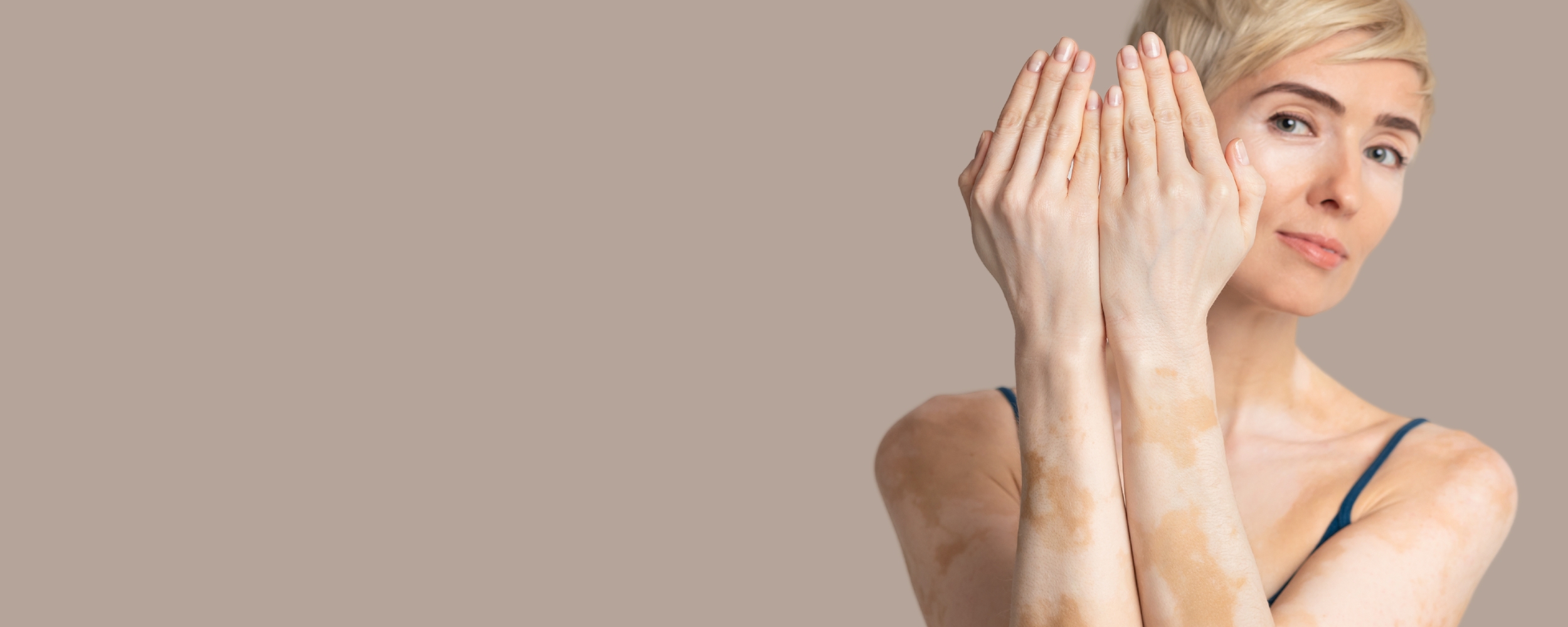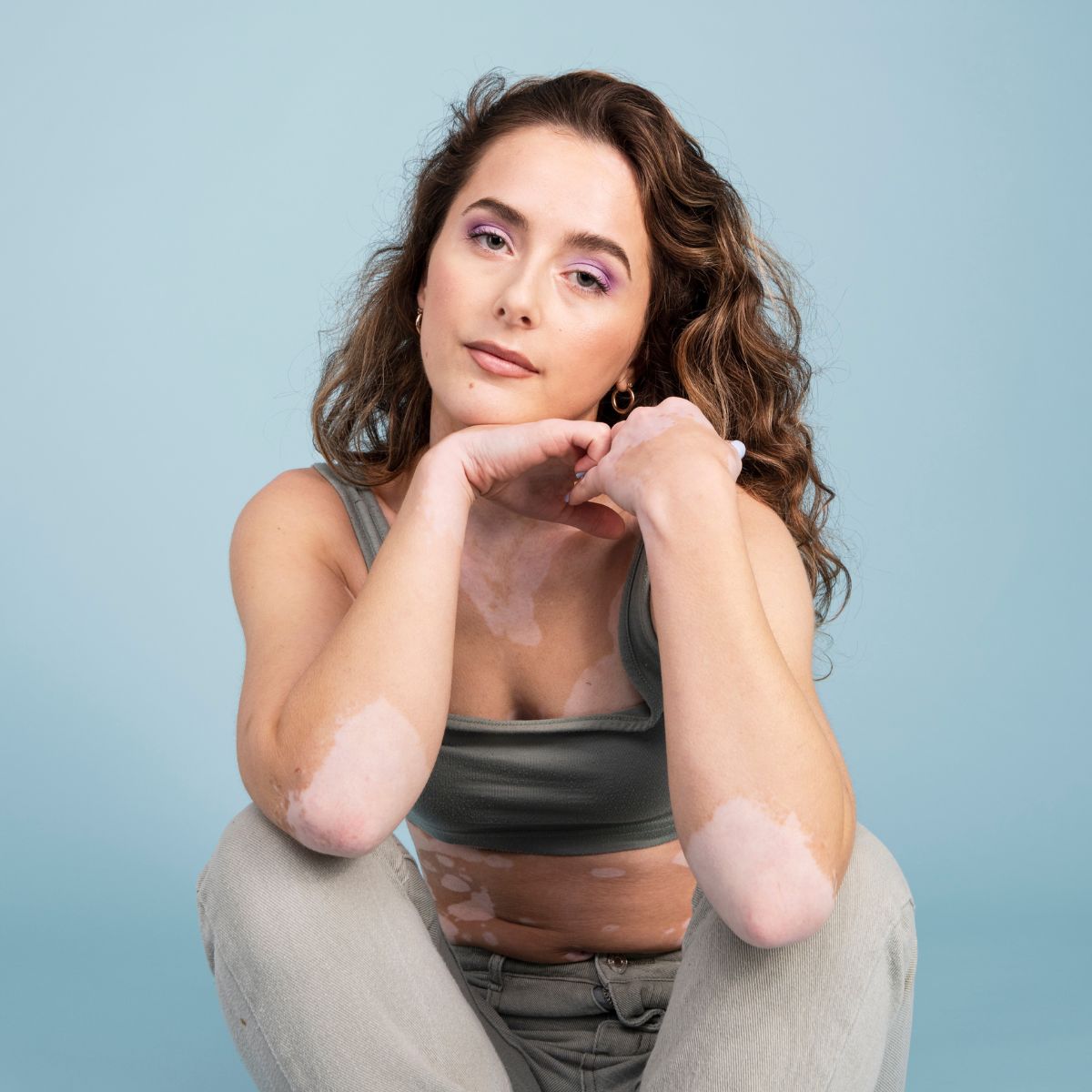
Causes & Symptoms
Vitiligo occurs when melanocytes, the cells responsible for producing melanin (the pigment that gives skin its colour), are destroyed or stop functioning. While the exact cause remains unclear, it is believed to involve a combination of genetic, autoimmune, and environmental factors. Common triggers include:
- Genetics: A family history of vitiligo or other autoimmune conditions increases the likelihood of developing the condition.
- Autoimmune Response: The immune system mistakenly attacks melanocytes.
- Environmental Triggers: Factors such as sunburn, stress, or exposure to certain chemicals may play a role in triggering or exacerbating this condition.
Symptoms include:
- White or light patches of skin, commonly appearing on the face, hands, feet, and around body openings.
- Premature graying or whitening of hair on the scalp, eyelashes, eyebrows, or beard.
- Changes in pigmentation of the mucous membranes, such as inside the mouth or nose.
Impact
The visible nature of vitiligo can have profound psychological and social effects. Sufferers may experience emotional distress and feelings of self-consciousness or anxiety about their appearance. Misunderstanding or stigma can lead to social challenges and reduced confidence or a reluctance to engage in activities like swimming or sunbathing. Addressing these challenges often requires a combination of emotional support and effective treatment strategies.
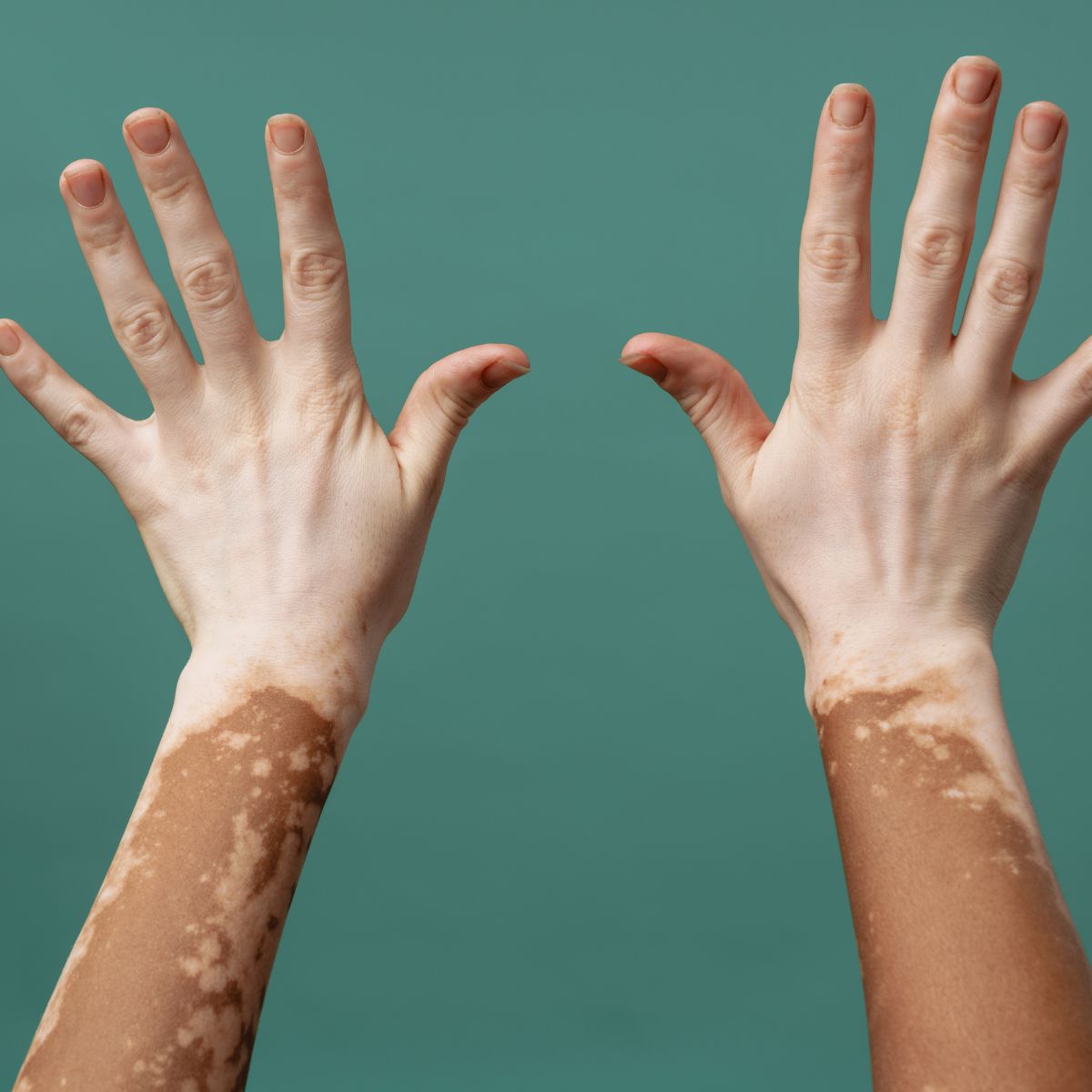
Effective Treatments
For Vitiligo
Book a consultation
-
While there is no cure for vitiligo, several treatments can help improve the appearance of affected areas and potentially restore pigment. We offer non-invasive solutions to help manage the condition effectively:
-
Microneedling: This treatment stimulates the skin’s natural healing process, promoting the regeneration of melanocytes and improving skin texture and tone. At Aesthetic Visual Result, we use the award-winning SkinPen®.
-
Chemical Peels: By exfoliating the top layers of the skin, chemical peels can enhance its overall appearance and reduce the contrast between depigmented and surrounding skin.
-
Our team can tailor a treatment plan to suit your individual needs, ensuring the best possible outcomes.
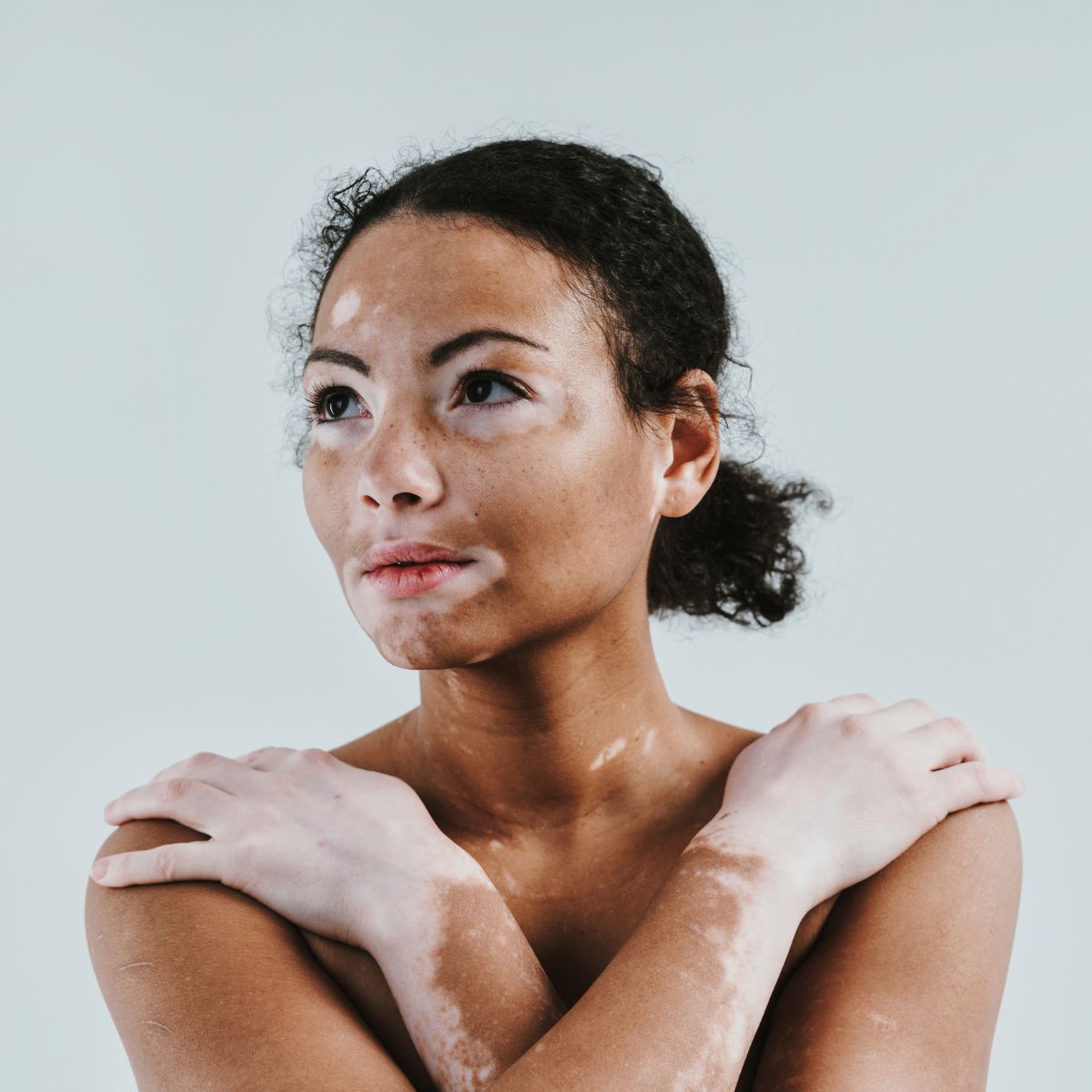
Tips & Advice
Sun Protection: Use broad-spectrum sunscreen daily to protect depigmented skin from sunburn and further damage.
Hydration: Keep your skin moisturised to maintain its health and elasticity.
Camouflage: Cosmetic products like skin tints or foundations can help even out skin tone for those seeking a temporary solution.
Healthy Lifestyle: Manage stress, maintain a balanced diet, and avoid environmental triggers to support overall skin health.
Seek Support: Joining support groups or speaking with others who have vitiligo can provide emotional comfort and practical advice.
Yes, it can spread to other areas of the body, but the rate and extent of progression vary from person to person.
Currently, there is no cure, but treatments can help improve the appearance of affected skin and slow progression.
While it is not strictly hereditary, having a family history of the condition or other autoimmune diseases may increase the risk.
Yes, certain treatments can be tailored to address active vitiligo, focusing on slowing its progression and improving skin health.
Results vary depending on the individual and the type of treatment used. Regular maintenance sessions and good skincare practices can help prolong results.
FAQs
Contact us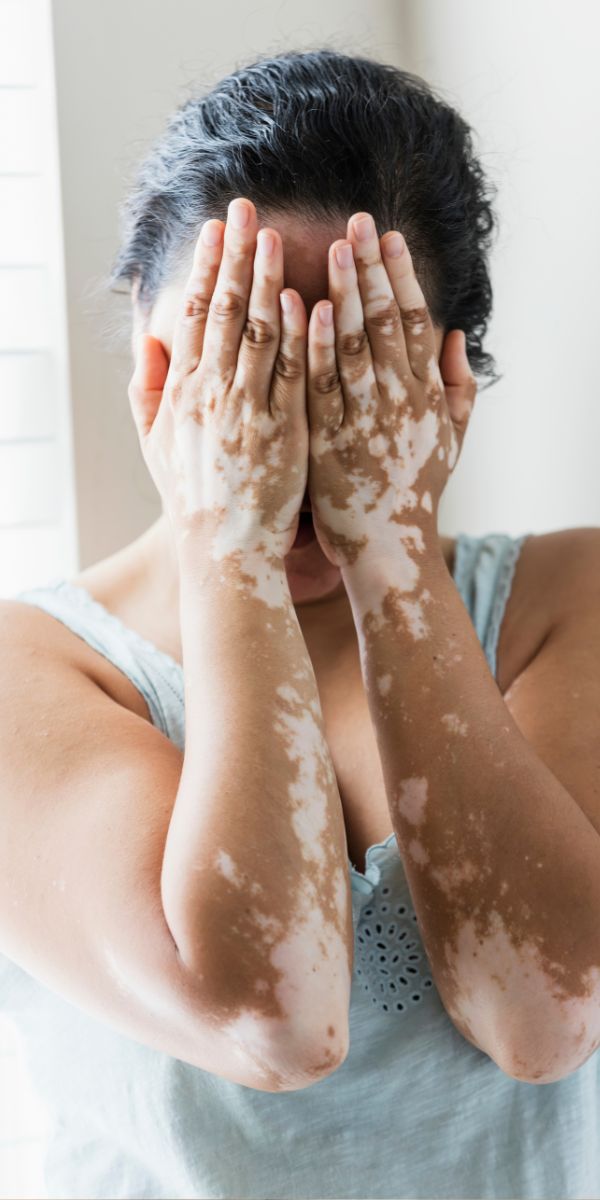

Book A Consultation
If you’re living with vitiligo and want to explore effective treatment options, Aesthetic Visual Result is here to help. Schedule a consultation today to receive expert advice and a personalised treatment plan tailored to your needs. Reclaim your confidence and take the first step towards healthier, more radiant skin.
BOOK A CONSULTATION